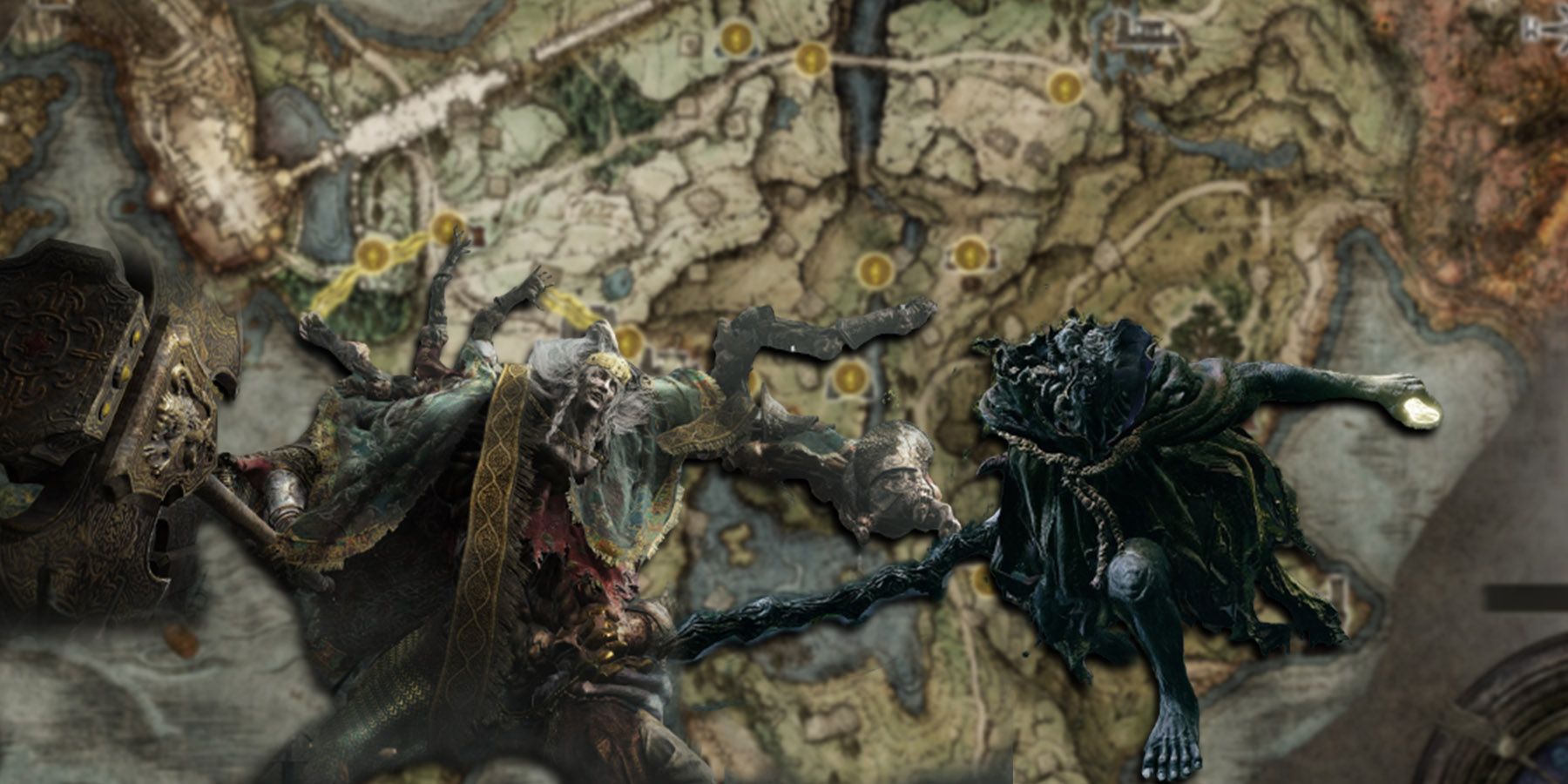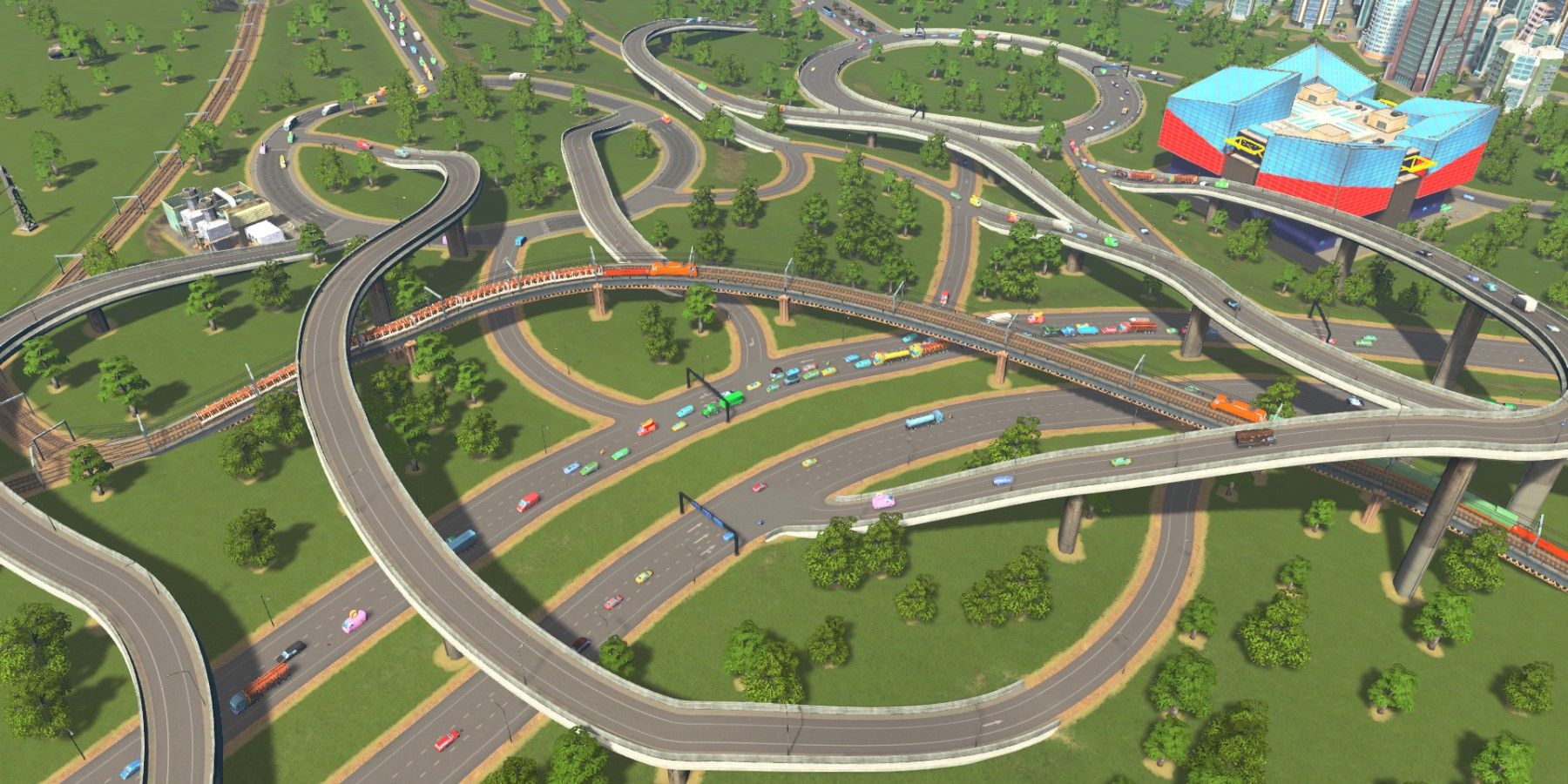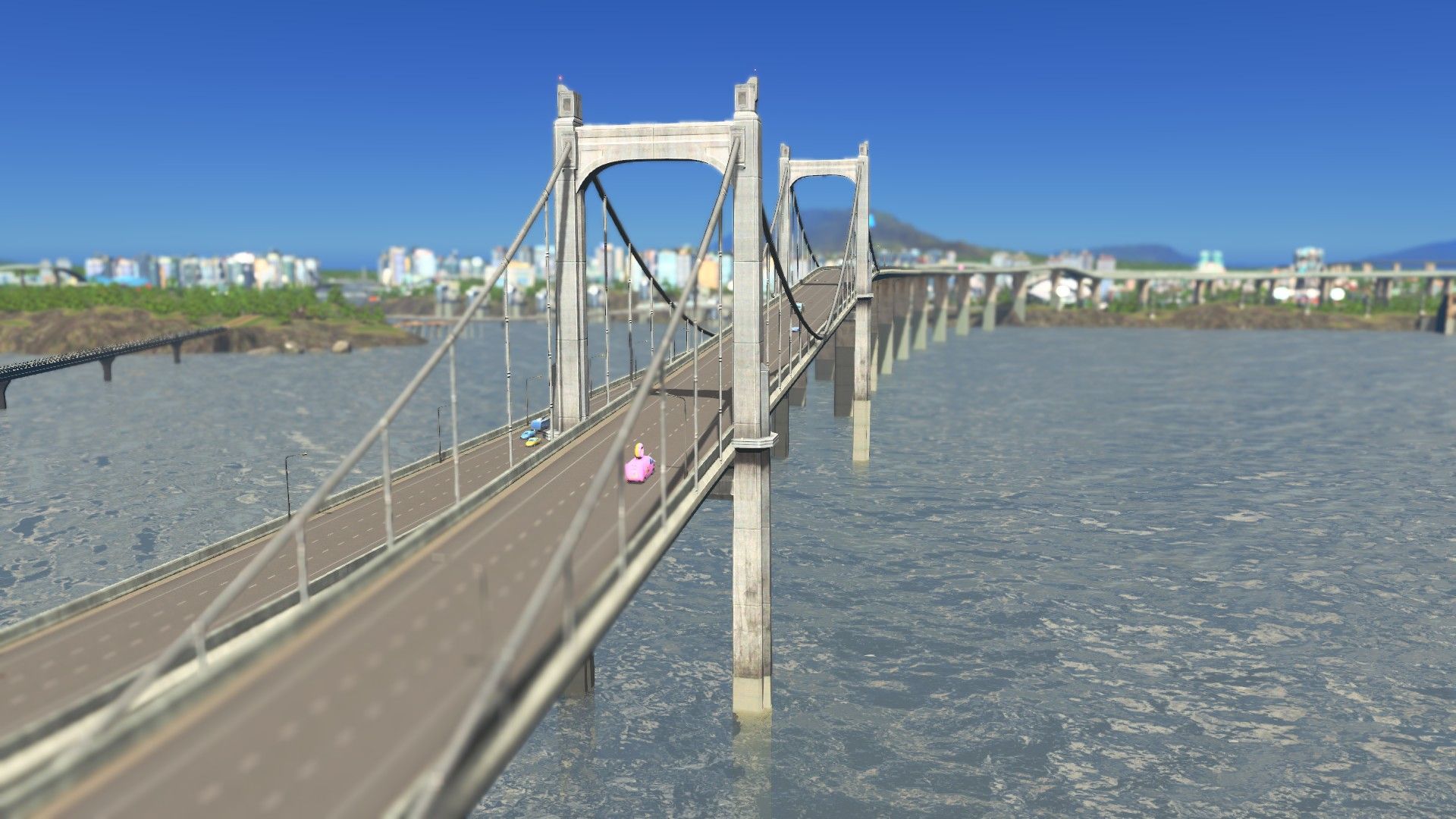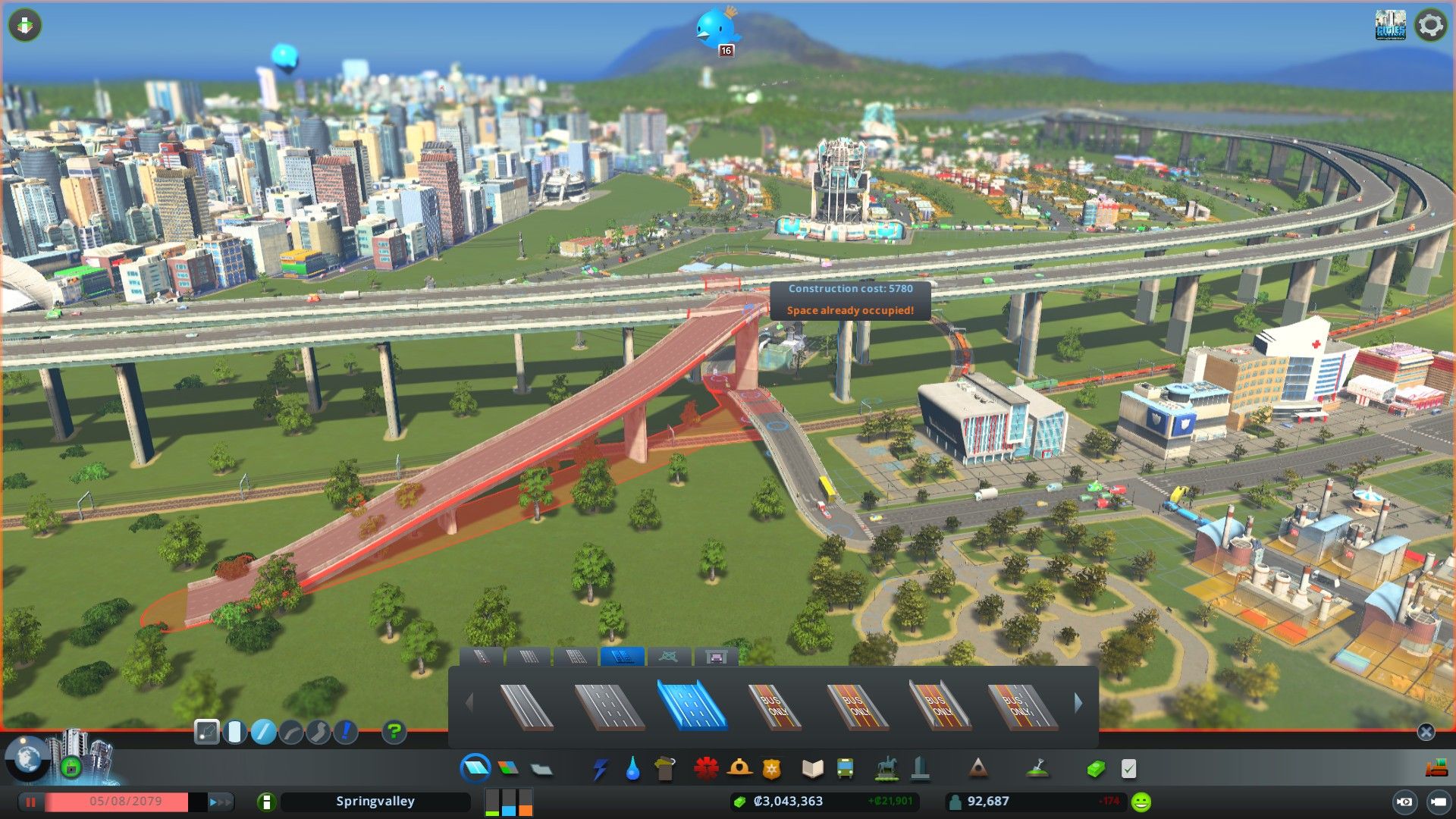The traffic system is a core part of Cities: Skylines. Players have to know how to route traffic in ways that keep vehicles moving and avoid big jams that slow everything down. Traffic jams can prevent supplies from reaching industrial and commercial buildings, and they can prevent residents from reaching their workplaces. It can also keep garbage trucks and hearses from reaching buildings of every type.
If a traffic jam gets bad enough, these issues can end up causing citizens to abandon a building. Part of building a good road network includes learning how to build bridges, overpasses, and tunnels in the right locations to connect roads while avoiding intersections. Learning how to raise and lower roads is the first step (the buttons are Page Up and Page Down on PC), but there's more to know about setting these structures up.
Bridge and Tunnel Basics
The first thing for players to know is that bridges and tunnels don't have a special sub-menu or category in Cities: Skylines. This is because the game will build these structures automatically based on where players draw their roads and how high or low they build them. If a road crosses a lake or river, the game will add bridge supports. If a road rises up over the land, the game will add supports. If players lower the road height to below the surface, the game will build a tunnel entrance or exit. This also applies to metro tracks and railroads.
Of course, players should also keep in mind that bridges and tunnels are much more expensive than surface-level roads, and the game will keep track of this price tag even if players don't. A simple two-lane road 10 cells long costs 400, but that goes up to 1040 for a bridge ramp and 2400 for a tunnel entrance. Something else to note is that the game won't let players build a road that's too steep: a 1 height ramp has to be at least 6 cells long, and a 2 height ramp must be 12 cells long.
Another important factor is overlap. When players build a road that changes height, the game will add the height change to the end of the road no matter how long it is. This means players will need to build a ramp first before they can build a bridge that goes over another road or building.
Tips for Busy Connections
- When it comes to highway connections, players should always use the most shallow angle possible. The sharper a turn is, the more vehicles will have to slow down to take it, and when vehicles slow down on the highway they can cause a massive traffic jam.
- Even after players build a ramp to the right height to avoid other roads, their bridge can still encounter the dreaded "space already occupied!" warning. This happens when the pillars supporting the road are too close to objects underneath. Players can still build an overpass that crosses the road, but they'll have to change the connection angle, change the road length, or possibly travel a different path to get around.
- Some of the best mods for Cities: Skylines allow players to select specific connections for road junctions, adjust the length and curvature of existing roads, and even ignore issues like bridge pillar collisions. However, none of these features are in the base game.
- Players should focus on using bridges, raised roads, and overpasses rather than tunnels, because tunnels are much more expensive.
- Overpasses are hard to upgrade since an upgrade can change both the road's width and the size of the pillars that support it. Players may need to delete an overpass section by section and rebuild it as the upgraded version.
- Power lines follow the same rules as roads when it comes to overlapping with other roads and structures. However, power lines can go over surface-level roads without having to go up a level and can't curve. They also can't go underground as buried cables.
- Players who want to design more authentic highway connections can use the landscaping tool to build a pair of hills on either side of a highway. The tool doesn't let players adjust the height of the highway, and so the edges of the hills will be sharp. This allows players to build a short bridge that only spans the highway and can be much less expensive overall than a full-length bridge.
- While players can't change a bridge's height, they can use the landscaping tool to bury a bridge's supports and make it look like a surface-level road. However, it won't stop being a bridge and any suspension or lattice structures will still be there.
Cities: Skylines is available now on PC, PS4, PS5, Switch, Xbox One, and Xbox Series X/S.






